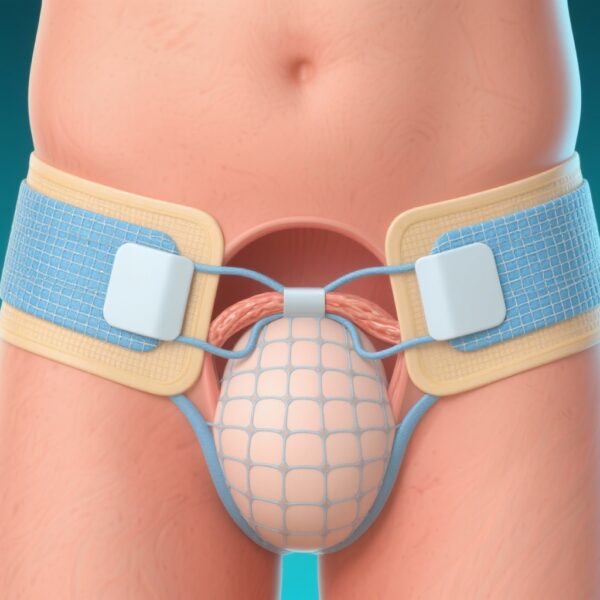Introduction
Chronic hepatitis B (CHB) infection remains a major global health challenge due to its high propensity to progress to hepatocellular carcinoma (HCC), a leading cause of cancer-related mortality worldwide. In parallel, the rising prevalence of metabolic dysfunction and metabolic dysfunction-associated steatotic liver disease (MASLD)—formerly known as nonalcoholic fatty liver disease (NAFLD)—has reshaped the landscape of liver-related morbidity. These metabolic conditions contribute independently to liver injury and carcinogenesis, potentially compounding risks in patients with CHB. Despite this evolving epidemiology, accurate HCC risk stratification tools tailored to patients with coexisting metabolic dysfunction are lacking.
This article examines a recent multicenter cohort study by Patmore et al. published in Alimentary Pharmacology and Therapeutics (2025), which investigates the interplay of metabolic dysfunction and MASLD in CHB patients and evaluates the applicability of the platelet-albumin-age HBV (PAGE-B) score in predicting HCC and other liver-related events in this high-risk population.
Study Background
Globally, CHB remains a significant driver of liver cirrhosis and HCC. Concurrently, metabolic syndrome components such as obesity, diabetes, hypertension, and dyslipidemia have surged, leading to increased MASLD prevalence. MASLD independently escalates HCC risk even in the absence of cirrhosis. The intersection of virus-induced and metabolic liver injury represents a confluence of carcinogenic stimuli, yet how these factors interact in determining HCC risk remains incompletely understood.
Clinicians require validated risk stratification tools to appropriately allocate surveillance resources and optimize early detection of HCC. Previously, the PAGE-B score, which incorporates platelet count, age, and sex, was developed to predict HCC risk in CHB patients receiving antiviral therapy but had not been extensively validated in cohorts with metabolic comorbidities or MASLD.
Study Design and Methods
This international observational cohort study involved 1,922 CHB patients with at least one metabolic comorbidity, recruited from nine centers. Metabolic comorbidities included overweight status, hypertension, dyslipidemia, and diabetes. MASLD was diagnosed based on liver steatosis assessed by ultrasound, controlled attenuation parameter (CAP) measurement, or liver histology.
Baseline clinical parameters and liver function tests were collected. The main outcomes analyzed were incident HCC and liver-related events during follow-up. Cox proportional hazard regression identified independent risk factors for HCC. The predictive performance of the PAGE-B score was assessed overall and within patient subgroups stratified by cirrhosis status and MASLD presence. PAGE-B categorization into low, intermediate, and high risk allowed calculation of 5-year HCC incidence rates per group.
Key Findings
The cohort characteristics underscored the high metabolic burden: 90% were overweight, 22.6% had hypertension, 13.2% dyslipidemia, 12% diabetes, and 38.1% were diagnosed with MASLD.
Independent predictors of HCC development included presence of cirrhosis, older age, lower platelet counts, and lower serum albumin levels—clinical markers reflecting both disease severity and compromised hepatic synthetic function.
The PAGE-B score effectively stratified HCC risk across the population. Five-year HCC incidences in low, intermediate, and high PAGE-B groups were 0.1%, 2.0%, and 12.4% respectively (p < 0.001). When focusing on patients with MASLD, the stratification remained robust, with incidences of 0%, 2.8%, and 11.1% across low, intermediate, and high PAGE-B categories (p < 0.001).
Subgroup analysis further highlighted that among non-cirrhotic patients, HCC risk remained negligible for low PAGE-B scores at 0%, rising modestly in intermediate (1.2%) and high (1.8%) score groups (p < 0.001). Conversely, cirrhotic patients exhibited substantially higher HCC incidence even with low PAGE-B scores (4.2%), climbing higher in intermediate (6.9%) and high (27.3%) categories (p < 0.001).
Expert Commentary
This study extends the clinical utility of the PAGE-B score to an important subgroup of CHB patients burdened with metabolic dysfunction and MASLD. Importantly, metabolic-associated liver disease does not appear to diminish the discriminatory capacity of PAGE-B for HCC risk stratification.
However, caution is warranted when interpreting PAGE-B scores in cirrhotic patients, many of whom retain a considerable residual risk even with low scores, underscoring the need for vigilant surveillance.
Limitations include potential heterogeneity across centers in MASLD diagnostic approaches and reliance on ultrasound or CAP, which are operator-dependent and variable in sensitivity. Additionally, the study’s observational design precludes causal inference.
Biologically, the additive hepatocarcinogenic effects of viral hepatitis and metabolic steatohepatitis may involve chronic inflammation, oxidative stress, and fibrosis progression. Future biomarker-based models incorporating metabolic and viral factors could refine HCC risk prediction.
Conclusion
In summary, CHB patients with concomitant metabolic dysfunction and MASLD comprise a large population at significant risk for HCC development. The PAGE-B score remains a valuable, accessible tool for HCC risk stratification in this context, enabling identification of patients at low risk who may undergo less intensive surveillance.
Nevertheless, in those with established cirrhosis, even low PAGE-B scores do not confer negligible risk, mandating continued rigorous HCC screening.
These findings have immediate translational relevance to clinical practice and liver disease management guidelines, encouraging integration of metabolic assessments in CHB patient surveillance protocols.
Further prospective studies and biomarker innovations are needed to refine risk stratification, guide surveillance intensity, and ultimately reduce HCC-related morbidity and mortality in this expanding at-risk group.
References
Patmore LA, Carey I, Feld JJ, Brouwer WP, Patel K, Buti M, Honkoop P, Postma DF, Blokzijl H, Koc ÖM, van Oorschot E, Agarwal K, van der Valk M, Lieveld FI, Kilany M, Kramer M, de Bruijne J, Claassen MAA, Hansen BE, de Man RA, Janssen HLA, Takkenberg RB, Sonneveld MJ. Prediction of Hepatocellular Carcinoma and Other Liver-Related Events in Chronic Hepatitis B Patients With Metabolic Dysfunction or Metabolic Dysfunction-Associated Steatotic Liver Disease. Aliment Pharmacol Ther. 2025 Sep 9. doi: 10.1111/apt.70360. Epub ahead of print. PMID: 40922677.



